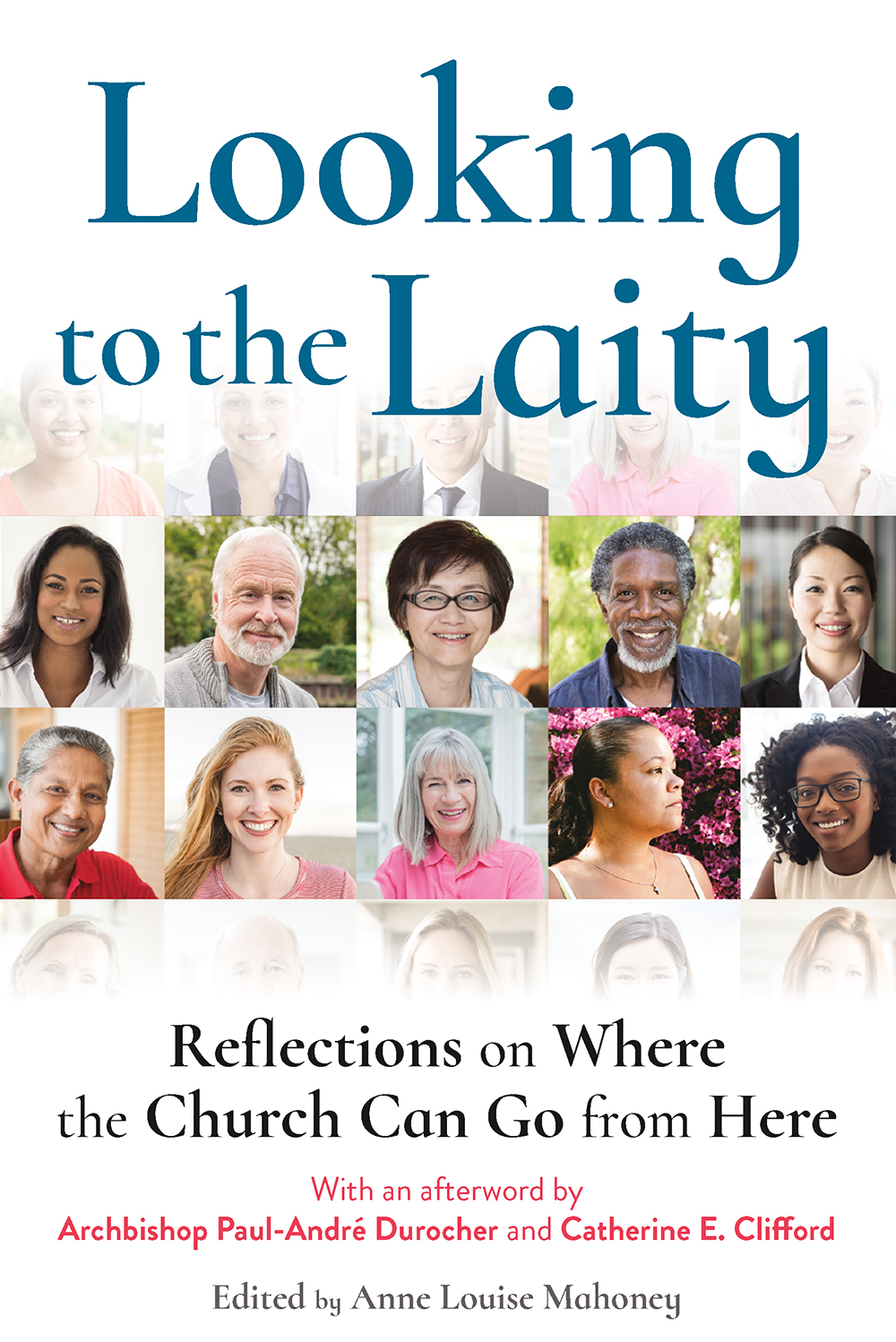
Q&A WITH ANNE LOUISE MAHONEY ON LOOKING TO THE LAITY
How would you describe your book to today’s Catholic, whether they are in the pews or watching from the sidelines?
This is a book for everyone who is wondering how lay Catholics can make more of a difference in the Church. Often it seems that for the Church, change happens at a glacial pace, but the book shows that many areas already invite lay contributions – from education and parish ministry to social justice and bioethics, and beyond. The next step is to broaden those areas so that more people can become involved and take an active role. It’s easy to feel discouraged that the teachings of Vatican II are not fully implemented, or that the hierarchy/clericalism reigns supreme, or that we will get in trouble for speaking up. But I feel it’s our responsibility as baptized Christians to share our concerns, fears, hopes and ideas so that, with the clergy, we can build a better, more inclusive, more engaged Christian community.
What inspired you to bring this book to reality?
It’s easy to feel, as a lay person, that we don’t have a very active role to play – even though, as St. John Henry Newman said, the Church would look foolish without us. Given the many challenges the Canadian Church is facing these days – fewer people in the pews (especially fewer young people), fallout from the clergy sexual abuse scandal, general irrelevance in many people’s eyes – I believe that a more engaged laity could help move things forward in a positive way.
The title – Looking to the Laity: Reflections on Where the Church Can Go from Here – could read provocatively, as if to indicate that we should no longer look (solely) to the clergy. Was that your intention? Whether it was or not, why is it lay Catholics’ ideas are being sought out now?
I was picturing a typical Catholic church, where all eyes are focused on the altar, the sanctuary, the priest. What if we looked back from there into the faces of lay people for a moment? What gifts can we find there? Today’s lay people are educated and, if they’re still going to church, they are engaged to some extent. How can we build on that to make the Church a collective effort rather than relying on clergy and official structures to keep it all together? It’s about creating a solid partnership. It’s about shared leadership, shared decision making, shared mission. The world has changed, and lay people can take on a fuller role now. With the 2023 Synod of Bishops approaching, this is an ideal time to engage the laity in the conversation, as Pope Francis is encouraging dioceses around the world to do. I look forward to seeing how bishops take the initiative to reach out and collect feedback from lay Catholics.
Who is the book intended for?
I hope that people of all stripes will read the book: lay people (young and older) who are wanting a more active role, lay people who are frustrated with the Church taking so long to embrace what they can do, clergy who are overwhelmed, bishops who are having to close or merge parishes… The aim is to start a constructive conversation and imagine a rich future for all.
What response(s) or actions (at least some of them) are you hoping will come out of the book?
There are a few key actions that I think are urgent:
1. Ongoing dialogue in dioceses, parishes and other faith communities to allow us – as lay people and clergy – to more actively share the gospel, including care for creation and connecting with the poor and marginalized;
2. More faith formation for all lay people, and specialized training for those who wish to take on greater roles and responsibilities and to mentor the next generation – which means more funding for programs and resources;
3. A larger appreciation for the gifts of women.
These would all be excellent next steps.
Why did you choose this particular set of authors?
All the authors have written for Novalis in the past; most are at a point in their lives and careers where they can both look back and look forward with wisdom. Even though they have challenges or criticisms for us to consider, these arise out of love for the Church. That starting point of love for the Church was key for me, along with their hope for building a healthier and more active Church.
What surprised you as you read the works from all these authors?
In some ways, I was surprised at how frank and honest the authors were willing to be. That is so refreshing! All of them have important insights to share. Three things have really stayed with me. One author said, “Father, you know you can’t do it all.” Another said, “We are here and we want to help.” And finally, the Church needs to provide and fund formation training for the laity through programs and other resources. That is doable! All we need is a commitment from clergy and lay people to make it happen. I look forward to seeing where we go from here.
Looking to the Laity: Reflections on Where the Church Can Go from Here can be found and purchased here.



